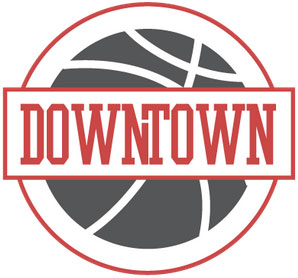The pick-up basketball played on Court One on Friday afternoons at Melbourne’s Albert Park Basketball Stadium in the 1970s, ’80s and ’90s was unusual.
The participants weren’t non-athletic guys in NBA jerseys clearing the ball at the three-point line and admiring each other’s crossovers. Nope, they were stars of Australian basketball — names such as Gaze, Goorjian and Bolden — showcasing an informal, ruthless rendition of the sport.
The weekly tradition was known to some as Jungle Ball, and it allowed its players to gauge their ability in elite company, to be in an environment where American imports felt at home, and to settle a dispute with a stabbing — allegedly, at least.
Jungle Ball games were full-court five-on-five, first to eleven with the winners staying on. Teams were determined by the order in which players hit a three-point shot to earn their way onto the court.
With a mixture of Australian and import names from the NBL and SEABL taking the court on Friday afternoons across the years—Andrew Gaze, Mark Leader, Ray Shirley, Bennie Lewis, Warrick Giddey, Bruce Bolden, Nigel Purchase, Jerome Lee and Ken Henry among them—those teams could be formidable.
Bruce Palmer would arrange to have the last period free on Fridays at his high school teaching job so he could get to the stadium to play. Simon Mitchell, now an assistant coach with Melbourne United, would catch the train towards Albert Park from Ivanhoe after school.
Mitchell’s motivation was to play against Lewis, who he had watched as a child. “We had some really good match-ups,” Mitchell said. “I loved playing against him. That was a real thrill.”
Jungle Ball was competitive though, so not all the battles were jolly.
“One time I called a foul, I think Brian Goorjian was guarding me, and he was tearing me apart,” Mitchell said. “Finally, I got like flesh wounds and I called a foul, and he lost his fucking mind. It almost turned into an all-in brawl.”
Added Mitchell: “Personal beefs got resolved on the floor sometimes, or off the floor afterwards.”
That competitiveness didn’t keep the sessions from being largely positive, the sort of place where people could improve their game.
“Andrew Gaze would finish school and come in at 15, 16 years old,” said Palmer. “I have no doubt that that really, really helped him in his development and his confidence, going against 25-, 26-, 30-year-old men.”
For NBL legend Mike Kelly, the Friday afternoon ritual tangibly furthered a pro career.
Before he made it to Jungle Ball, Kelly was playing state league basketball for Griffith in New South Wales. The American had come to Australia in 1990 after a playing stint in Taiwan. He was told Griffith was a stepping stone to the NBL and was flown in on a club-funded airfare.
The playing standard Kelly faced in New South Wales wasn’t high, and he didn’t have a professional lifestyle. The SEABL served as a logical next step and playing Jungle Ball, which he had read about in a basketball publication, would help him get there. After the Griffith season, Kelly and a friend drove down to Melbourne in an old Ford Falcon with Albert Park Basketball Stadium on their itinerary.
Lindsay Gaze was among the coaches who at least occasionally played on those Friday afternoons. The others included Goorjian, Al Westover and Palmer. Their presence meant Jungle Ball could turn into a kind of recruiting ground, as Kelly found out in 1990 after the drive down from Griffith for his first session.
“I felt like it was an audition,” said Kelly, who recognised the coaches. “I tried to play hard all the time, but I played a little extra hard that day.”
Palmer, the North Melbourne Giants coach at the time, was playing during Kelly’s first appearance.
“These are the things you find out when you play in these pickup games—how smart is the player, how hard does the player play, does he take shortcuts in the game,” Palmer said.
Afterwards, Kelly got Palmer’s phone number at the Rising Sun, where Jungle Ball players went for postgame drinks. He rang Palmer from youth hostels as he and his friend continued their road trip back up the east coast. Kelly was in Airlie Beach, Queensland when Palmer asked if he wanted to play for the North-East Melbourne Arrows, a SEABL affiliate of the Giants.
Kelly spent three seasons with the Arrows and trained with the Giants during that time. He then played two SEABL seasons with the Nunawading Spectres and practiced with the South East Melbourne Magic. During those five years, he kept going back to Albert Park on Friday afternoons.
He appeared in NBL games in 1993 with Hobart and ’94 with South East Melbourne, but Kelly’s first regular gig came with the Magic in 1996. In the NBL, he ended up with 346 games, two Best Defensive Player awards, one championship and one Grand Final MVP.
Though Jungle Ball helped Kelly move along in his career towards those accomplishments, its appeal was more than being a place to get recognised.
“I think the Americans liked the camaraderie of seeing other Americans all together at one time, playing that pickup ball that they kind of grew up playing,” said Kelly. “And the Australians—well, the Americans just love guys who love to hoop, and so it became just a good group.”
The sessions ended when Albert Park Basketball Stadium was closed in 1997. The venue has effectively been replaced by the Melbourne Sports and Aquatic Centre (MSAC).
Pick-up basketball can still be seen at MSAC, but anything resembling Jungle Ball cannot.

I had a lifetime average of 4 baskets per game…great times
ok let’s take it back abit further to 83 & onwards. Those days was the start of Friday ball 3-0’clock SHARP. Can you name some of the earlier guys who played?? Now that was Hoopin, Andrew gaze wasn’t even there yet.